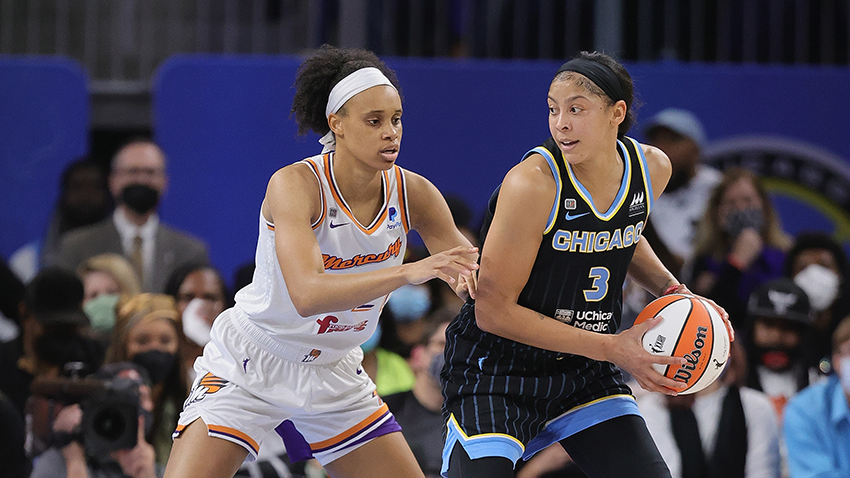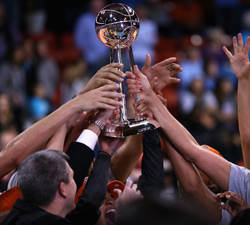New Playoff Format Keeps Pressure Mounting

For the first 19 WNBA seasons its postseason looked the same. There were two conferences, and the top four teams from both the East and the West made the playoffs.
In principle this structure works, but in practice it often yielded uneven results as one conference would be far and away better than the other. Due to the structure, some of the best regular season teams wouldn’t make the postseason because of their respective conferences.
That’s all changed in the league’s historic 20th season.
Now, the format is more basic, but in turn likely much more fair. The top eight teams make the postseason in 2016, regardless of conference. Not only does this mean that best eight teams record-wise will be playing playoff ball, it also ensures that the two best regular season teams won’t play in the conference finals, instead they have a chance to meet for a championship.
In the old format, the current WNBA-leading Sparks and Lynx would only have the chance to play in the Western Conference Finals. Now if everything goes according to plan, these two Western conference foes will instead meet with a WNBA championship on the line.
“I think the new playoff structure has had a huge impact on the regular season,” said ESPN basketball analyst LaChina Robinson. “Teams are playing with more of a sense of urgency, every night teams are gunning for that one or two overall seed or even three or four because it gives you best chance of winning.”
Also, the top two teams will be guaranteed a spot in the semifinals and the all-important home court advantage through the playoffs.
A potentially exciting but pressure-packed new fold to the format is the concept of the one-and-done. The first and second rounds are single elimination. In the first round, the No. 5 seed hosts the No. 8 seed and the No. 6 seed hosts the No. 7 seed. In the second round, the No. 3 seed hosts the lowest-seeded first-round winner and the No. 4 seed hosts the other first-round winner. These are must-win games, meaning that although the Liberty have already clinched a playoff berth, they are only guaranteed one playoff game.
“If I’m a fan or member or in the media I love it. I love the NCAA tournament feeling that it brings,” said Robinson’s fellow ESPN basketball commentator, Rebecca Lobo. “But if I’m a player in a three or four seed, I don’t like it at all. One little injury or game against a team that has a great shooting night and a team that won 20-something games’ season is over. While yes, it heightens the level of excitement for everybody, if you’re player you don’t love it. But, me as a fan now I love it, it adds so much to the excitement.”
While the Liberty and those beneath them will have to face the added pressure of the one-and-done, the Lynx and Sparks’ biggest test comes against each other, and the battle for the number one overall seed.
The season series has been split down the middle with Tuesday night’s 10:00 pm (EST) encounter on ESPN 2 looming large.
“The Sparks can definitely move the ball,” said Lynx swingwoman Seimone Augustus. “We used to always know the ball was going to Candace but now with Nneka stepping up and shooting 70% from the field she’s really grown into her own. The two games we’ve played them it’s been tough. The third game is going to be a battle of the titans for who wants it more.”
Sparks star Candace Parker also recognizes the importance of Tuesday’s colossal matchup. “With the new playoff format we knew we needed to be in the top two spots and secure homecourt advantage. Every game we play we’re playing for first place so that’s the way we approach it. We have a huge game on Tuesday against Minnesota that can really affect that.”
As the league careens towards these uncharted playoff waters, the anticipation is palpable in every arena on any given night. Seeding will be fluid for the next two weeks and the picture is far from being finished. When the playoffs do eventually begin the action is sure to be frenetic, but compelling from start to finish.
,xPosition=.5,yPosition=.5)
,xPosition=.5,yPosition=.5)
,xPosition=.5,yPosition=.5)
,xPosition=.5,yPosition=.5)